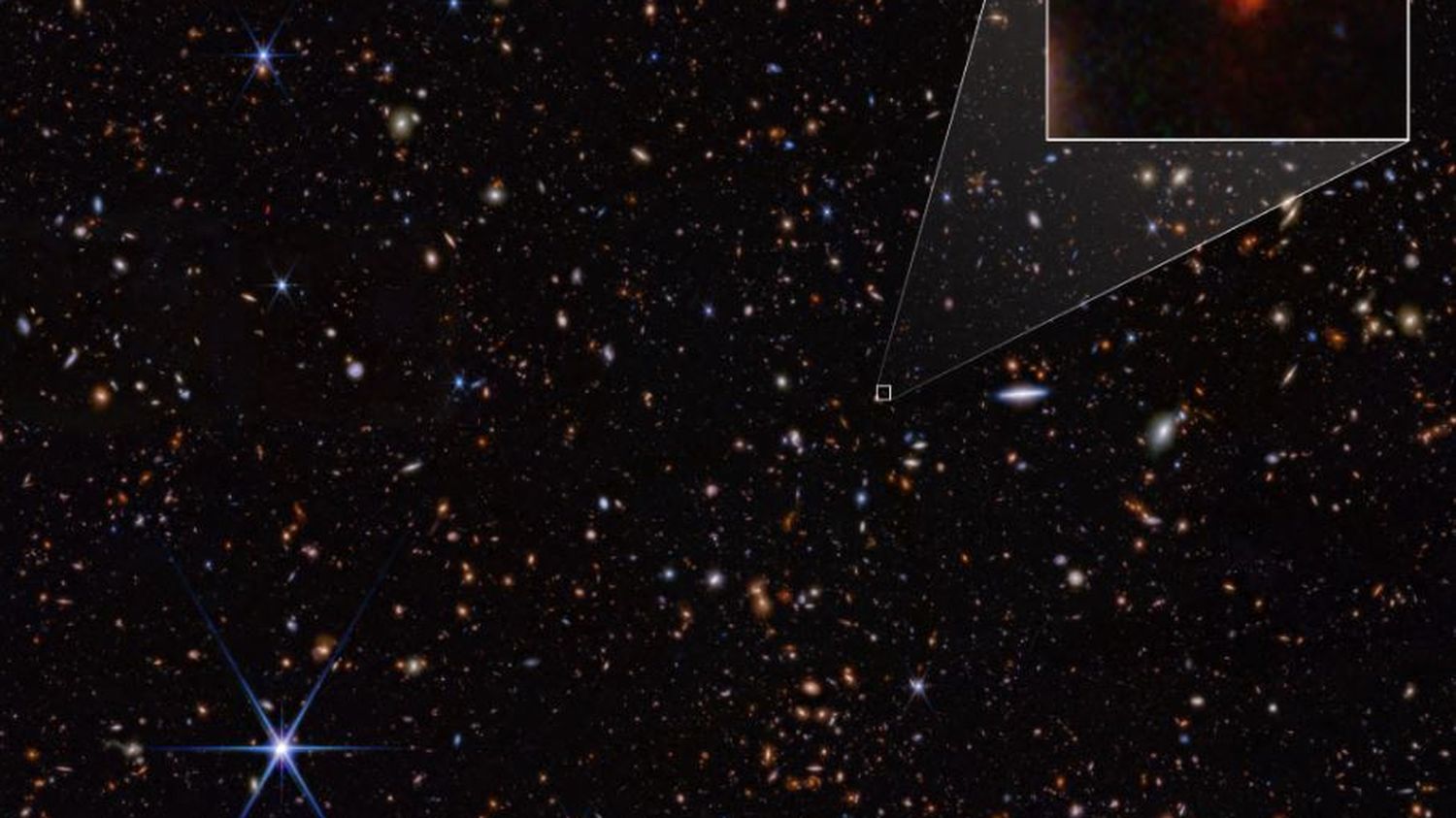The light from JADES-GS-z14-0 takes 13.5 billion years to reach us.

Published
Reading time: 2 min

A new distance record. The James Webb Space Telescope has managed to observe the most distant galaxy to date, a team of international scientists announced on Thursday, May 30. The light from JADES-GS-z14-0, its nickname, took more than 13.5 billion years to reach us, while the Big Bang is dated around 13.8 billion years. It’s not about “kind of galaxies predicted by theoretical models and computer simulations in the very young Universe”commented the researchers, literally amazed: “How could nature create such a luminous, massive, and large galaxy in less than 300 million years?
“If the universe were a two-hour film, this galaxy dates from the first two and a half minutes”, explained Kevin Hainline, of the University of Arizona, in a video posted on social networks. But she is “extremely weird”he added. “It’s very bright, quite large, it could contain evidence of oxygen, and given the size of the region we explored to find it, we could discover a lot more.”
In astronomy, seeing far means going back in time. For example, light from the Sun takes eight minutes to reach us, and we therefore see it as it was eight minutes ago. But the light emitted by very distant objects stretched until it reached us, and “blushed” along the way, passing into a wavelength invisible to the naked eye: infrared. The particularity of James Webb, one of whose main missions is to explore the very young Universe, is to only operate in the infrared.
Since its launch in December 2021, the telescope had already observed the galaxy so far declared the most distant, JADES-GS-z13-0, dating 320 million years after the Big Bang. The news announced therefore breaks its own record. But “the record doesn’t count” and can be beaten again, said Kevin Hainline. “What matters is the fact that uuniverse seems to be teeming with very bright galaxies.” JADES-GS-z14-0 contains a lot of stars “which is impressive considering the short time” between the Big Bang and the observed moment, he explained.
The traces of oxygen detected also arouse curiosity, because this gas “requires stars to have lived their entire lives and then died in supernova explosions”. The galaxy was first detected in January 2023 using the NIRCam imager, but it was thanks to observations a year later by another instrument in the telescope, the NIRSpec spectrometer, that confirmation of its distance was later made. delivered. The galaxy is more than 1,600 light years across, and its mass is estimated to be several hundred million times that of the Sun.
